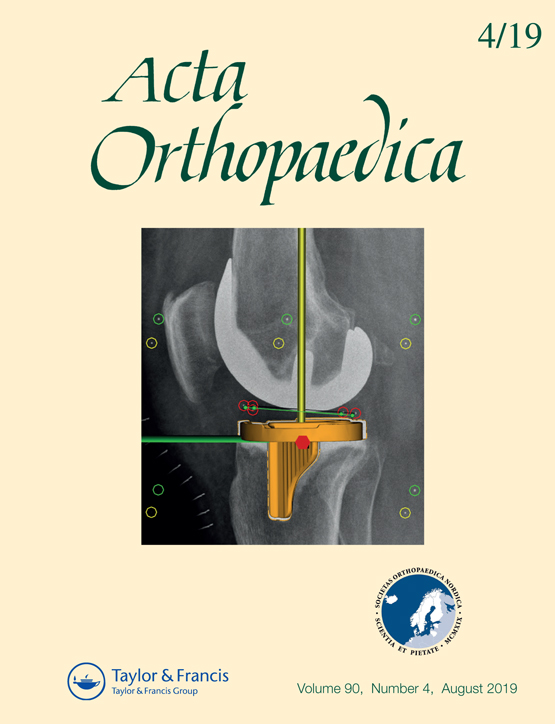Outcome of 881 total hip arthroplasties in 747 patients 21 years or younger: data from the Nordic Arthroplasty Register Association (NARA) 1995–2016
DOI:
https://doi.org/10.1080/17453674.2019.1615263Abstract
Background and purpose — The literature is scarce on the outcome of the youngest patients with total hip arthroplasties (THAs). We analyzed register data, revision risk, and related factors in patients 21 years or younger with THAs in the Nordic Arthroplasty Register Association (NARA).
Patients and methods — We included all THA patients 21 years or younger reported during 1995 through 2016 to the Danish, Finnish, Norwegian, and Swedish hip arthroplasty registers and merged these into the NARA dataset. Primary outcome was any implant revision.
Results — We identified 881 THAs in 747 patients. Mean age at primary surgery was 18 years (9–21). The indications for THA were pediatric hip diseases (33%), systemic inflammatory disease (23%), osteoarthritis (4%), avascular necrosis (12%), hip fracture sequelae (7%), and other diagnoses (21%). Unadjusted 10-year survival for all THAs was 86%. Comparison between indications showed no differences in survival. Uncemented implants were used most frequently. Survival for uncemented and cemented implants was the
same adjusted for sex, indication, head size, and time period for primary surgery. Aseptic loosening was the main cause of revision.
Interpretation — Both cemented and uncemented fixations seem to be a viable option in this age group, but with a lower implant survival than in older patient groups.
Downloads
Downloads
Published
How to Cite
Issue
Section
License
Copyright (c) 2019 Vera Halvorsen, Anne Marie Fenstad, Lars B Engesæter, Lars Nordsletten, Søren Overgaard, Alma B Pedersen, Johan Kärrholm, Maziar Mohaddes, Antti Eskelinen, Keijo T Mäkelä, Stephan M Röhrl

This work is licensed under a Creative Commons Attribution-NonCommercial 4.0 International License.







